'Preferred site' found for new Royal Preston Hospital as government minister experiences conditions in the current one
and live on Freeview channel 276
The government announced in May that the Lancashire and South Cumbria region had been successful in its pitch for the cash needed to create brand new hospital facilities for both Preston and Lancaster - to open in around a decade from now - rather than revamp the existing aged and crumbling estates.
Even prior to that announcement being made, the search was on for potential locations for the new hospitals - in the hope that the funding bid would be approved.
Advertisement
Hide AdAdvertisement
Hide AdThat process, which has been under way for over a year, saw a range of possible plots identified - all within a ten-mile radius of the current units.
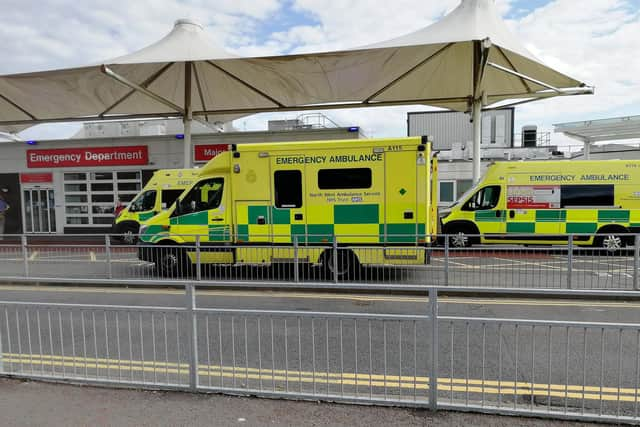

South Ribble MP Katherine Fletcher revealed shortly after the funding was confirmed that the shortlist of places where the replacement Royal Preston could be built were all within the borough she represents.
However, the Post has been told that single “preferred” options now exist for each of the new-build locations - although other potential sites have not been ruled out in case the ones currently currying favour with health chiefs cannot ultimately be secured.
The top choices are being kept under wraps until there is more certainty about whether they can be purchased - although both will, at some point, have to be put out to public consultation, because of the significance of the service changes being proposed.
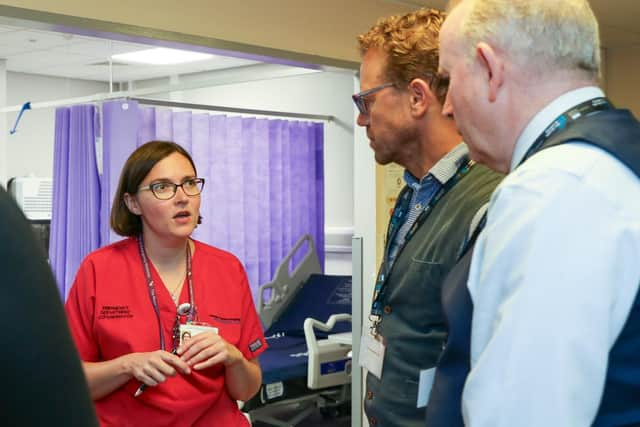

Advertisement
Hide AdAdvertisement
Hide AdJerry Hawker, senior responsible officer for the new hospitals programme in Lancashire and South Cumbria, said that there was now a “very short list of options” for the new hospital sites.
He added: “I think it’s fair to say that we have preferred sites, but that doesn't mean that we won't still be exploring other[s]...depending on whether [the desired locations] are available or not.
“We are trying to move forward to acquire sites as quickly as we can, because I think that's a really strong message to say [that there] is a commitment to build these new hospitals - [and] we have a site. We want to bring that part of the process to a close as soon as possible.
“It’s really important to say that the right location for the hospital is one that works as well as possible for the people of Lancashire and South Cumbria - but that said, there are lots of considerations around the ground type that we have to [factor in for]...utilities. So it’s not easy…and we’ve got to go through a very thorough process,“ Mr. Hawker explained.
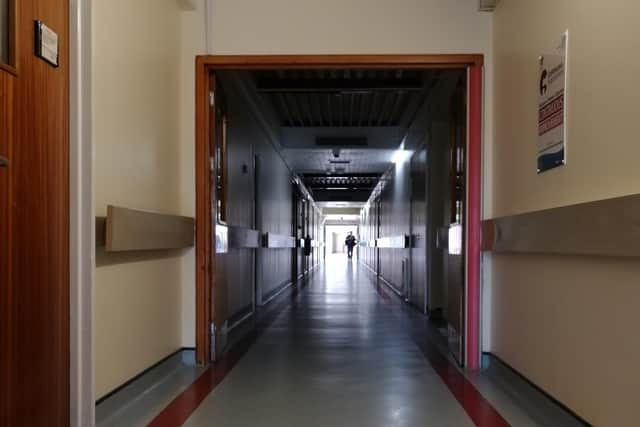

Advertisement
Hide AdAdvertisement
Hide AdHe was speaking to the Post after welcoming a government delegation to the Royal Preston on Wednesday as part of a nationwide tour of those parts of the country where new hospitals and health facilities have been approved.
The roadshow event saw health minister Lord Nick Markham spend several hours at the Sharoe Green Lane site, speaking to staff and patients and being shown the reality of working in and being cared for in its buildings - some of which were described in the bid for government funding as being in a state of “serious dilapidation”. Q&A sessions were also held with patients, NHS leaders, politicians and other interested parties.
After the visit, Lord Markham said that investing in new NHS facilities across the country would enable patients to “access high quality care in state-of-the-art hospitals, both now and in the years to come”.
“The North West will benefit from six new hospitals and this week I’ve been visiting some of the sites and speaking to patients, staff and local leaders across the region about the plans and progress.
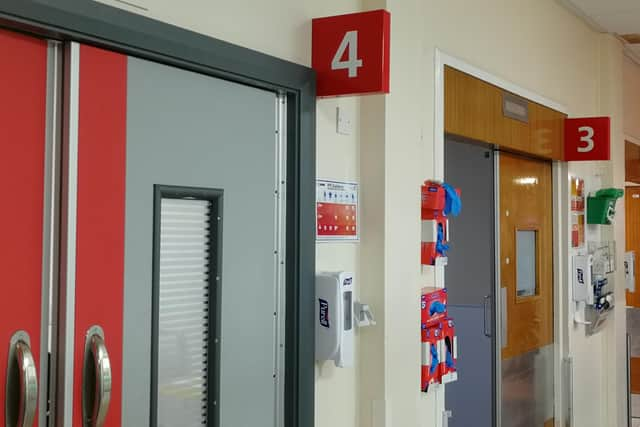

Advertisement
Hide AdAdvertisement
Hide Ad“These will help to improve care and allow patients to be seen more quickly, which will help to cut waiting lists – one of the government’s top five priorities,” the minister added.
Asked by the Post what the purpose of the visit had been when the Lancashire and South Cumbria region had already persuaded Whitehall to part with the cash needed to build the two new facilities, Jerry Hawker said that it was important to “make the new hospitals programme real for everybody”.
While Preston and Lancaster got the funding that local NHS chiefs had sought, the hospitals - which had been expected to open in 2030 in the event of the cash being secured - will not now welcome their first patients for at least a decade.
That is because Lancashire and South Cumbria was one of eight regions which saw its plans pushed back as result of other hospitals being drawn into the programme and prioritised for replacement as a result of the concrete from which they were constructed putting them at risk of collapse.
Advertisement
Hide AdAdvertisement
Hide AdThe delay was alighted upon by some members of Lancashire County Council’s health scrutiny committee last month, who quizzed Mr. Hawker about whether or not the new Preston and Lancaster facilities were guaranteed to come to fruition.
After Wednesday’s ministerial visit, he told the Post that the region had been given “very clear indications now regarding the capital investment that will go into the hospitals”.
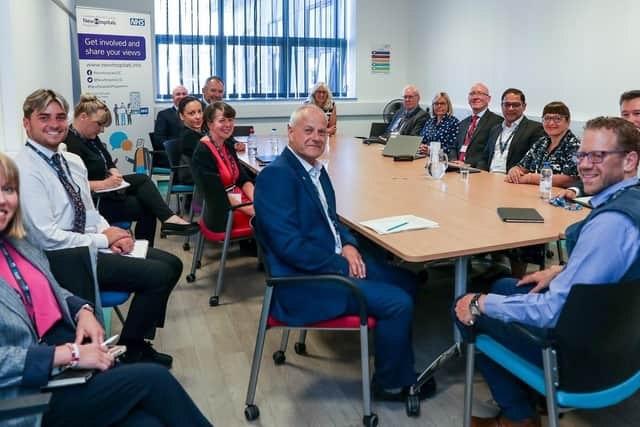

He added that he and his team were “working very closely with the government to enable us to have the capital available to make a purchase” of any chosen sites for the two hospitals.
While building work proper is not now expected to begin until the turn of the decade, rapid acquisition of the land would allow “some early enabling work” to be carried out at the locations, Mr. Hawker said.
PRE-PACKED HOSPITAL?
Advertisement
Hide AdAdvertisement
Hide AdMeanwhile, it has emerged that up to 30 percent of the new Royal Preston and Royal Lancaster hospitals will be of a tailored design to ensure that they meet local needs.
Jerry Hawker came under pressure from councillors on Lancashire County Council’s health scrutiny committee last month over the standardised buildings that the government is expected to roll out to those areas where it has approved new hospital facilities over the next ten years.
A concept known as “Hospital 2.0”, it prompted Chorley councillor and retired GP Margaret France to warn that a “one-size-fits-all” building would not be suitable for a hospital like the Royal Preston, which offers a range of specialist services for the wider Lancashire and South Cumbria region.
Asked by the Post whether he could assuage concerns that Preston and Lancaster were going to end up with new hospitals straight out of a box, he said that there would be some local flexibility and that the idea was to “capture the best of hospital design”.
Advertisement
Hide AdAdvertisement
Hide Ad“We’re always learning from [other] new-build hospitals about how things can be done better…not just in the UK, but internationally. But that said, you can't have a single hospital [design] that will meet every area’s need.
“So generally speaking, we’re saying that 70 or 80 percent of it will be a common, standard design, but then we will flex it to the local needs of the Lancashire and South Cumbria population - whether that just be the aesthetics of its appearance or the design of some of the services themselves. I think it’s a great balance between the two,” Mr. Hawker said.
The Lancashire and South Cumbria scheme is in the fourth of four “cohorts” within the nationwide New Hospitals Programme, placing it amongst the largest and most complex projects.
On his visit to the Royal Preston this week, health minister Lord Markham also extolled what he claimed will be the virtues of the partially standardised approach.
Advertisement
Hide AdAdvertisement
Hide Ad“In the long term…[it] means we can rapidly replicate new hospitals across the country, helping to speed up construction and deliver on our commitment of 40 new hospitals by 2030,” he said.
‘IT'S NOT ALL BAD’
The soon-to-depart boss of the trust that runs the Royal Preston says that staff are invigorated by the prospect of a brand new hospital - even if it is ten years away from opening its doors.
Kevin McGee - chief executive of Lancashire Teaching Hospitals NHS Foundation Trust - told the Post that while the operational date was “a long way off”, it had to be in order to ensure that the NHS “get[s] it right”.
To that end, there will be consultation with a range of groups, including the workforce, which Mr. McGee says is “really engaged and really excited” about the necessary planning that will now follow.
Advertisement
Hide AdAdvertisement
Hide AdHe also stressed that it was not “universally” the case that all of the Royal Preston's facilities were poor - in spite of the fact that it was their deteriorating and ageing condition that served to convince the government of the need to build a wholly new replacement.
“Some of the facilities…are outstanding - our critical care unit [opened in 2020], for instance. But we do know that the ward block and, particularly, the front end [of the hospital], around A&E, are not fit for purpose."
That was something that the Post witnessed first-hand, just hours after Lord Markham had done so during his visit on Wednesday.
A trip through the emergency department revealed cramped conditions, with areas where it would be impossible for two trolleys to pass side by side - although relatively recent additions like a rapid assessment area appeared to be providing some relief in the largely 1970s-built hospital. Corridors leading off to other parts of the facility were also narrow and dimly lit.
Advertisement
Hide AdAdvertisement
Hide AdMr. McGee said that investment would continue in the site - which has a £157m maintenance backlog - in spite of its days now being numbered.
The 62-year-old also looked forward to a time - long after his impending retirement from the NHS this autumn - when the new Royal Preston can act as a magnet for jobs in research and development and biomedical services.
“If you think about some of the other big hospitals in the North West, in Manchester and Liverpool...they’re able to leverage a lot of additional work [and] a lot of additional income [through such specialist work].
“We’re going to do that for Lancashire - the new hospital will allow us to do that,” Mr McGee predicted.
Advertisement
Hide AdAdvertisement
Hide AdHe added that he wished that he was “10 years younger”, as he “would have loved” to remain with the trust to oversee the delivery of the new hospital in the early-mid 2030s.
TWENTY-FIRST CENTURY VISION
The innovative ways in which the trust that runs the Royal Lancaster Infirmary works will help attract and retain staff while they await the arrival of a brand new hospital in the next ten years, its chief executive believes.
Aaron Cummins, who leads the University Hospitals of Morecambe Bay NHS Foundation Trust, told the Post that the announcement that funding had been secured to build a new facility had “landed incredibly well” with his colleagues.
Acknowledging that the existing estate was “pretty poor” - and so adding to the general recruitment challenge within the NHS - Mr. Cummins said: “I think some of…our clinical improvement work and digital improvement work does draw good colleagues to us to work across our three hospital sites [in Lancaster, Barrow and Kendal].
Advertisement
Hide AdAdvertisement
Hide Ad“I think having that notification that the new Royal Lancaster Infirmary is [able] to be built is a further opportunity to recruit good colleagues into the system.”
He was speaking at the Royal Preston Hospital, where he was attending the visit by government health minister Lord Markham. Although the peer did not get to see for himself the challenges faced by the Lancaster site - which include its hilly location, spread of services across multiple buildings and the need sometimes to use ambulances to ferry patients from one part of the plot to another - those obstacles, along with an £88m maintenance backlog, almost certainly helped make the case for a new-build hospital for the north of the county.
Mr. Cummins said he believed that the facility's completion will be “well within the purview” of the careers of most of the trust’s staff - and added that they were keen to get involved in the design of their new workplace.
“It has to have all of the good facilities that you would want a 21st-century hospital to have, but [also] the things that we generally don’t invest in as a priority in the NHS - good working environment, good open spaces, making sure that we’ve got single rooms for patients [and] that we've got some…rest areas for colleagues.
Advertisement
Hide AdAdvertisement
Hide Ad“So it's a massive opportunity to build what we all know will be a fantastic facility for staff and patients,” said Mr. Cummins, who added that some “considered decisions” would have to be taken about how to use the “limited capital investment we have in our system” in order to maintain the current Lancaster site until it closes after more than 125 years in operation
